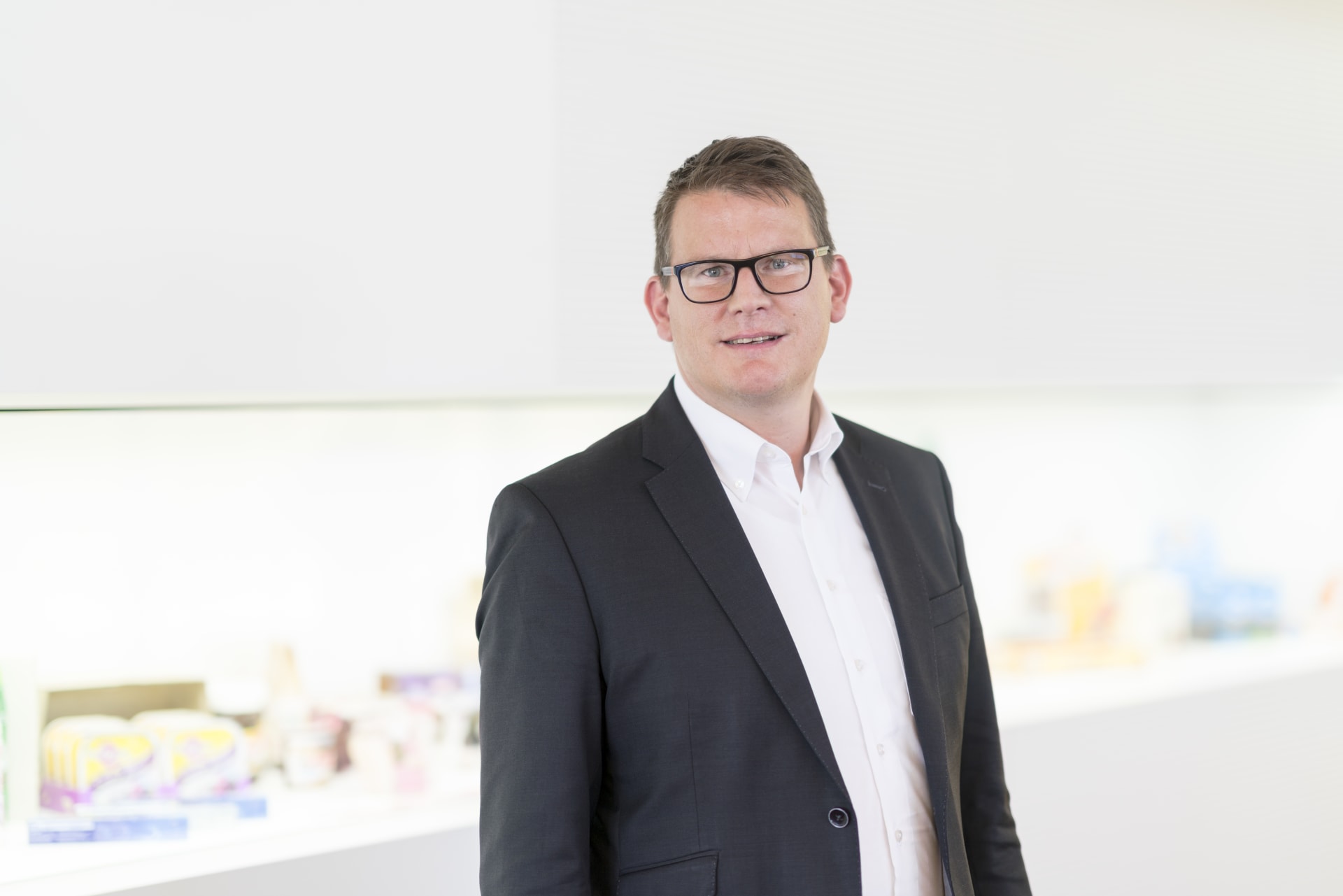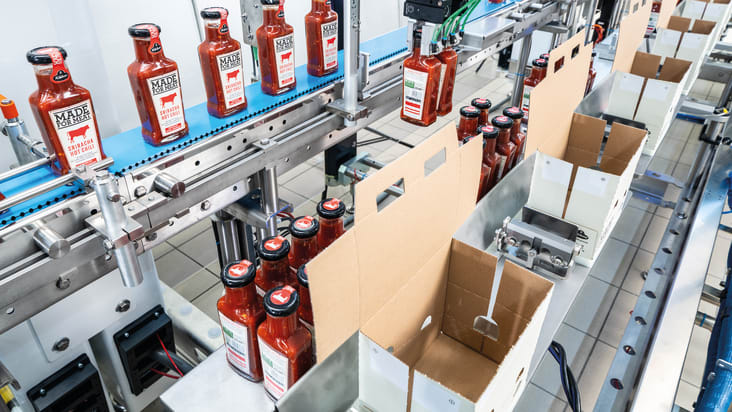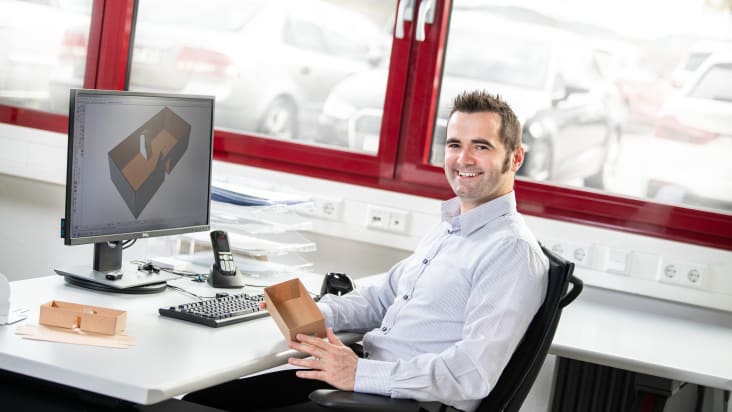Which trend is more relevant – highly flexible packaging machines or individual complete solutions?
At first view, these two requirements may appear mutually exclusive. But for Schubert, flexibility and complete solutions are not contradictory. For this reason, a decision in favour of one or the other is not needed. Our packaging machines satisfy both objectives thanks to their modular design and our comprehensive approach to the entire packaging process. However, the market is now calling for significantly more flexible solutions at various points along the way. And technological developments – specifically digitalisation – are also challenging familiar, proven processes.
Which developments require an exceptionally high degree of flexibility?
We see the open issue of packaging material as one of today’s key topics. This is currently creating a great deal of momentum in the industry. What is needed are packaging options that are as environmentally friendly as possible, while providing optimum protection for the product and being cost-neutral for the end consumer. More cardboard instead of plastic, more paper barrier film instead of multi-layer barrier film – this is what the future has in store for us. These alternatives can already be used with our packaging machines today. After all, paper-based packaging has been part of the Schubert landscape for more than 50 years. But manufacturers are facing a new challenge and want solutions that can be retrofitted. This is why we pay great attention to flexible application possibilities when developing new systems, and we test new packaging materials for quality and process suitability with our own packaging machines. With new types of film, for example, the impermeability of flow-wrap packaging and the quality of the sealed seam are put under the microscope in one of our Flowmoduls.

Martin Sauter, Head of Sales at Schubert
In this context, how do you assess the increasing trend towards personalised products?
“Mass customisation” is most definitely a second decisive development for the packaging industry. Product variety is constantly increasing, not only in terms of the product itself, but also in terms of packaging variants and personalisation options. This means that the production units are becoming smaller and that more frequent retooling is required. Manufacturers are therefore increasingly in need of highly flexible packaging machines that allow easy, fast format changes and are then immediately ready for use again. This clearly reflects our philosophy: A Schubert line should immediately deliver faultless production results without requiring a ramp-up curve. Especially in fast-moving sectors such as the cosmetics industry, where the time to market is becoming ever shorter, these functions are essential for smooth, efficient production. Digitalisation plays a key role here – opening up new approaches on a previously unimaginable scale.
What exactly are you referring to?
A new digital opportunity that is growing rapidly in the industry is additive manufacturing. We are now using this process for 3D printing of format parts for robot tools. Customised 3D tools, which are form-fitted to products, can now be changed in minutes or even printed out via our PARTBOX streaming platform directly in the production environment. A second option, which allows even more flexibility, is through machine control: Schubert uses the international OPC-UA standard as the machine language for its VMS packaging machine control system, so that our TLM systems can be easily integrated into turnkey solutions. Moreover, the GS.Gate industrial gateway which is now integrated into every new Schubert machine offers new options for preventive maintenance and fast service. This reduces the risk of machine downtime to an absolute minimum.
How do you integrate flexibility into your packaging machines?
We look at flexibility first and foremost from a product perspective. You should be able to pack different products with different package sizes in different configurations on a single packaging machine. And I also mean products that are as diverse as bottles and biscuits. That is the benchmark we set for ourselves and by which we measure our work. We have two types of machines for this purpose. On the one hand, the picker lines, which pack unsorted individual products. This represents 100 per cent flexibility. And on the other hand, TLM systems with product grouping – either with pick & place robots, which in this calculation achieves close to 70 per cent flexibility, or with mechanical pre-grouping. Here you could refer to 50 per cent flexibility, although this figure can be further increased by using interchangeable pre-grouping tools. So flexibility is all in the tool! However, the mechanics only account for part of how flexible a packaging machine can be. That is why we consider the mechanics, electronics and software as an integrated system, whose variability is ultimately mapped in the VMS packaging machine control system.
From the product itself, we then move on to secondary and tertiary packaging: Different pack sizes, individual products, variable product configurations, cardboard, flowpacks or trays, each made of different materials, these are all variants that we can implement on one and the same machine thanks to modular technology. Schubert machines have flexibility built in – virtually by design.
So what does a complete solution imply for Schubert?
Basically, just that: Thanks to our flexible technology, we can seamlessly map the complete packaging process from the bare product to the ready-to-deliver pallet in a machine from Schubert. For each order, we look at the upstream and downstream processes in view of providing the best solution to our customers. Classic stand-alone machines have long ceased to be a focal point at Schubert; we build lines with at least two up to any number of integrated processes. For us, complete solutions also entail the expansion of our technology portfolio. In recent years, we have developed numerous processes which we can now integrate into the TLM systems ourselves. This includes processes such as deep drawing, sealing or punching, as well as processes such as filling liquids or dosing powders. As a complementary technology, we develop our robots without a protected space – as cobots. So you could even say that Schubert supplies complete solutions which are and remain flexible in themselves.



